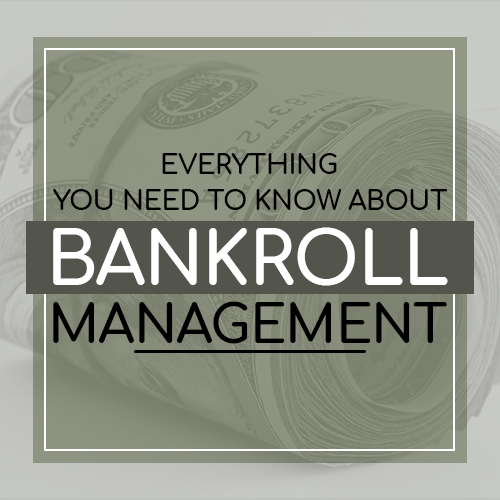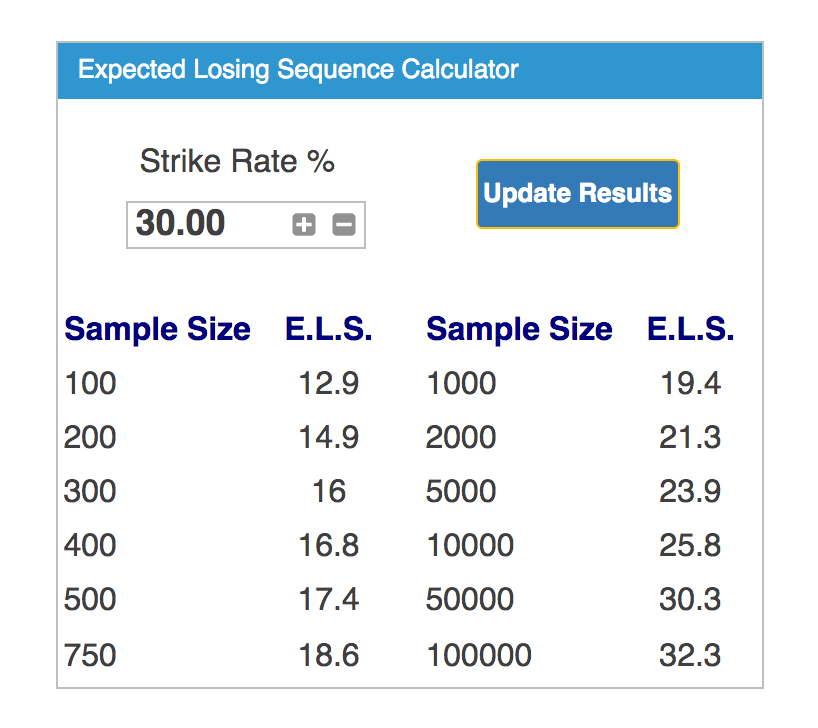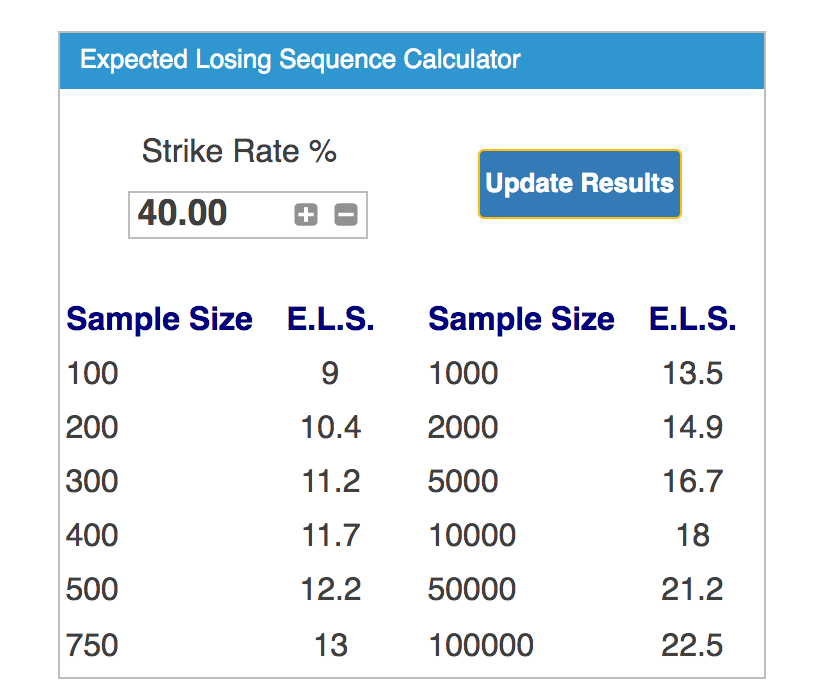Everything You Need to Know About Bankroll Management
You might have seen bankroll management mentioned as something that is important. But are you completely clear on what it means? Not everyone takes the time to find out the basics. Fortunately, it isn’t all that difficult to do.
It might sound obvious. After all, it is clear that it has something to do with managing your funds. However, there are some issues you might not be aware of. Let’s take a look at what good bankroll management is all about.
What is Bankroll Management?
The first thing to point out is how important this. In sports betting, you won’t achieve success without good bankroll management. You could run out of money before the wins start to arrive.

It might help to compare it to investing in the financial markets. Every investor knows how vital it is to manage their funds. By making your money grow, you can invest more. It is all based on a solid-long term approach.
Someone who buys shares needs to have a plan. Otherwise, their money could run out. They can’t put it all on high-risk investments at the start. They might do this once they have turned a profit, though.
Bankroll management in betting comes from a similar approach. You are controlling your funds in the best way possible. You want to earn the biggest possible profits. At the same time, you need to avoid going bust. This leads to a balancing act.
There is some common ground between betting and financial market investing. There are also some differences, though. So you can’t just start off with the same strategy.
We will look here at all of the most important factors. Starting with what a starting bank is and then moving onto how to calculate the ideal figure.
What Is the Starting Bank?
You might see the bankroll described as the starting bank. This is simply the amount of money that you start with. These are the funds that you plan to grow over time.
Each betting strategy has unique starting bank requirements. This depends upon how often you expect to win and lose. The amount of the stake is also taken into account. The idea is to nurture your funds and grow them without going bust.
How can you work out the exact starting bank that you need? Some systems will tell you this when you join up. You might be happy to follow their advice. If you want to work it out on your own, you will need quite a lot of numbers.
As with any calculation, the more numbers you have the greater the accuracy of the results. This means that your own betting history probably isn’t enough. You will need to base your calculations on a far bigger sample.
One way that people calculate the starting bank is by multiplying the number of bets by the stake. Let’s imagine that you want to place 10 bets at £10 each. This would mean a starting bank of £100 using this method. If you are going to place twice as many wagers, you double the bankroll figure.
This is a simple way of working it out with no fuss. But there are some problems with it. For a start, it would mean a bigger investment than most people are happy with. Most of us want to re-invest our winnings to keep the initial amount low.
In high-risk strategies, you also run the risk of losing more money. If you add in more funds, the losses could build up. This approach could see you losing more than you need to.
On the other hand, a more modest starting bank limits your maximum losses. It is extremely unlikely that you use every single bet. However, the bigger the starting bank the more you are putting at risk unless you are sure of the system.
As we will see later on, bigger bankrolls can actually reduce the risk. However, we need to be sure of the numbers before deciding this. It isn’t just a case of putting in more money for the sake of it.
Tying up a lot of money in a starting bank isn’t a good idea. Thankfully, there is a more efficient approach. We can now turn out attention to the way of working this out.
How to Work Out the Right Bankroll Requirements
Working out your initial bankroll isn’t too difficult once you know how. If you are worried about complex formulae then you will see that there is no need for concern.
However, you do need the following pieces of information.
- The number of bets you will be placing. This is crucial and can’t be left out. It isn’t quite as simple as saying more bets means a bigger starting bank, though.
- The size of the stake that you will be using. This needs to be constant for the calculation below. With variable stakes, you need more complex formulae.
- The strike rate of the system. This should be available on the website offering the system.
- The longest losing streak that you can expect to hit. We will be working this out using the information above.
There is a formula that we can use to work out an ideal bankroll. This is fairly easy to work out. Firstly, you can work out the longest expected losing streak at the Staking Machine site.
This is where we need to use the strike rate and number of bets. We will then get back a number. This is the maximum number of losses you can expect in a row.
You can then multiply the stake by the longest expected losing sequence. The result you have now is the recommended starting bank. Having said, that, you might want to tweak it.
Some people do this by adding in a “risk factor” multiplier. This is used to reflect your personal opinion on taking risks. However, since it complicates matters we will leave it out for now. We will look at it in a minute, though.
Let’s move on to looking at a couple of examples. This lets us see exactly how it works in real life.
Some Bankroll Management Examples
We can see how this works by looking at some examples. In the first case, we have a system that uses £10 wagers. You will be placing 100 bets and the hit rate is 30%.

Using the simple approach of wagers x number of bets, we get £1,000. This is too much for most people. It is also un-necessary. If you could lose so much then it isn’t really a great system, is it?
How does it differ when we calculate a more efficient starting bank? To start off, we can work out our expected losing streak maximum as 12.9. This is done using the link provided earlier. We can round it up to 13 for the purpose of this calculation.
Therefore, our final calculation is 10 x 13 = £130. So, a starting bank of £130 is fine. This is a lot better than the £1,000 mentioned earlier. It takes into account all of the relevant factors too.
We can now turn our attention to a system with higher stakes and more bets. How much will this push the starting bank to? We use the same method to work it out in this case.
In this example, the hit rate is 40%. We are going to place 500 bets of £20 each. This gives us possible losing streaks of up to 12 wagers. Our calculation for the bankroll is, therefore, 20 x 12 = 240.

A starting bank of £240 is fine for most people. But if we had worked out in the simple how much would it have been? Well, 500 x 20 = £10,000. Taking the high hit rate into account helps up to keep starting bank down for this system.
By working out more examples, you can see exactly how this works. It is a simple but very effective method. Before signing up for any system, you can run through this calculation. It only takes a moment and gives you lots of useful information.
The Risk Co-Efficient Factor
I mentioned this earlier but didn’t want to confuse matters by going into detail. Now is a good moment to look at the risk co-efficient issue. If you want to take your own feelings on risk into account then we can look at it now.
This is a number that you choose to reflect the amount of risk you are happy to take. The lower this number, the happier you are to run risks. You might want to go as high as 5 if you aren’t comfortable taking some risks. Otherwise, you could go down as low as a 1.
You then multiply your bankroll by this number. What this means is that risk-adverse bettors will choose a bigger starting bank. They have a smaller risk of going bust. Someone who is happy taking risks will have less funds tied up.
If we look at the example above, the starting bank we worked out is £240. Someone who is happy to run risks might not apply a risk co-efficient factor at all. They are running the risk that a losing streak early on makes them go bust. This isn’t something I would recommend.
They might be unlucky and get the maximum losing streak of 13 bets right away. Or they might get two losing runs in a row. So they could lose their entire bank.
If you want to reduce risk then you need to increase the starting bank. Add a factor of 4 or 5, for instance. You would now have a starting bank of £960 (£240 x 4) or £1200 (£240 x 5) instead of £240. There is now a much lower risk of you going bust.
I would personally recommend a factor of 4 or 5 to avoid busting the bank.
The same factor could be applied to every system you use. Or you might choose a number based on the riskiness of each one. It is entirely up to you.
If you don’t apply a factor then you are taking a risk to some degree.
The starting bank is a good indication of how much you need to begin with. Adding this in this factor just makes it more robust. It is a personal decision on whether to do this or not
The Benefits of Choosing the Right Bankroll
By now, we can see how important the right bankroll is. To sum up the benefits, we can list the following points.
- Don’t tie up more funds than you need to. You might be free to try a few systems at once in this way. This will increase your chances of winning more money.
- Reduce the risk of going bust. If you go bust then you lose your money. Therefore, you want to avoid this more than anything else. This calculation takes into account the amount you need to avoid this happening.
- Avoid adding in more funds over time. Another risk is that you might need to keep on putting in more funds. This can happen if your starting bank is too low.
- Reflect your own thoughts on risk-taking. The risk co-efficient factor is also very important. This is what allows you to tweak the figure to your needs.
- Remove some of the fear and uncertainty. If you start betting without calculating your bankroll how will you feel? There is a chance that the uncertainty makes you feel nervous.
Betting a Percentage of Your Bankroll
You might have seen the idea of making each wager a fixed percentage of your bankroll. On the face of it, this makes sense. You are taking care of your money by risking less if the total drops. As your bankroll increases, you put more into your bets. It is also very easy to work out.
Let’s say that you always bet 5% of your bankroll. If it drops to £100, you wager £5. If it rises to £1,000, you can bet £50 each time. You just need to calculate the 5% of whatever your bankroll is currently.
However, there are some problems with this approach. The first one is that it doesn’t take into account the quality or value of each bet. You might place big bets on the poorest quality wagers. This isn’t the best use of your funds.
It also gives you the risk of losing control of your bankroll. If you go on a losing streak at the top end of the scale, your funds will quickly diminish. If you win at the bottom end, the profits will be lower. Again, this isn’t an efficient way of betting.
Another alternative is to adapt the stake according to the odds. In this case, higher odds mean a lower stake. This gives you some more control but can result in huge stakes for short odds favourites.
Overall, this isn’t a recommended approach. Using constant stakes will give you a greater level of control than this.
The Kelly Method is also commonly quoted on betting sites. This sees you wager a percentage of your bankroll, depending upon the odds and value. With higher value bets, you put more off your bankroll at stake.
The main issue with this approach is that your bankroll can disappear quickly. This is partially avoided by using a fractional method. In this way, you place lower wagers each time. It helps to stretch out your funds but not everyone is comfortable with it.
Choose a Strategy That Suits You
Some people choose a strategy then try to fit their financial situation into. This can work, but it can also go wrong. You might find that your funds run out quickly if you have tried to force things.
It makes more sense for you to approach this is in the opposite way. This means working out how much you can use as your starting bank. You then look for a strategy that suits you.
If you only have a small starting amount, you will want a system with small stakes. Ideally, it will also have a good strike rate and small losing streaks. You still need to work out the numbers, though.
If you have more funds then how can you use them wisely? You might want to go for a system that requires highest stakes. Or you might prefer to split out your money over several systems.
There are many good, profitable betting systems available. Don’t feel rushed into choosing one that isn’t perfect for you. Take your time and make sure the bankroll requirements are right for you.
Bankroll management Conclusion
Bankroll management is one of the keys to betting successfully. The good news is that it doesn’t have to be a mystery. Bankroll management may not be the most exciting topic, but it’s important!
By understanding some simple calculations, you can manage your bankroll well. There is no excuse for letting this get out of control.

